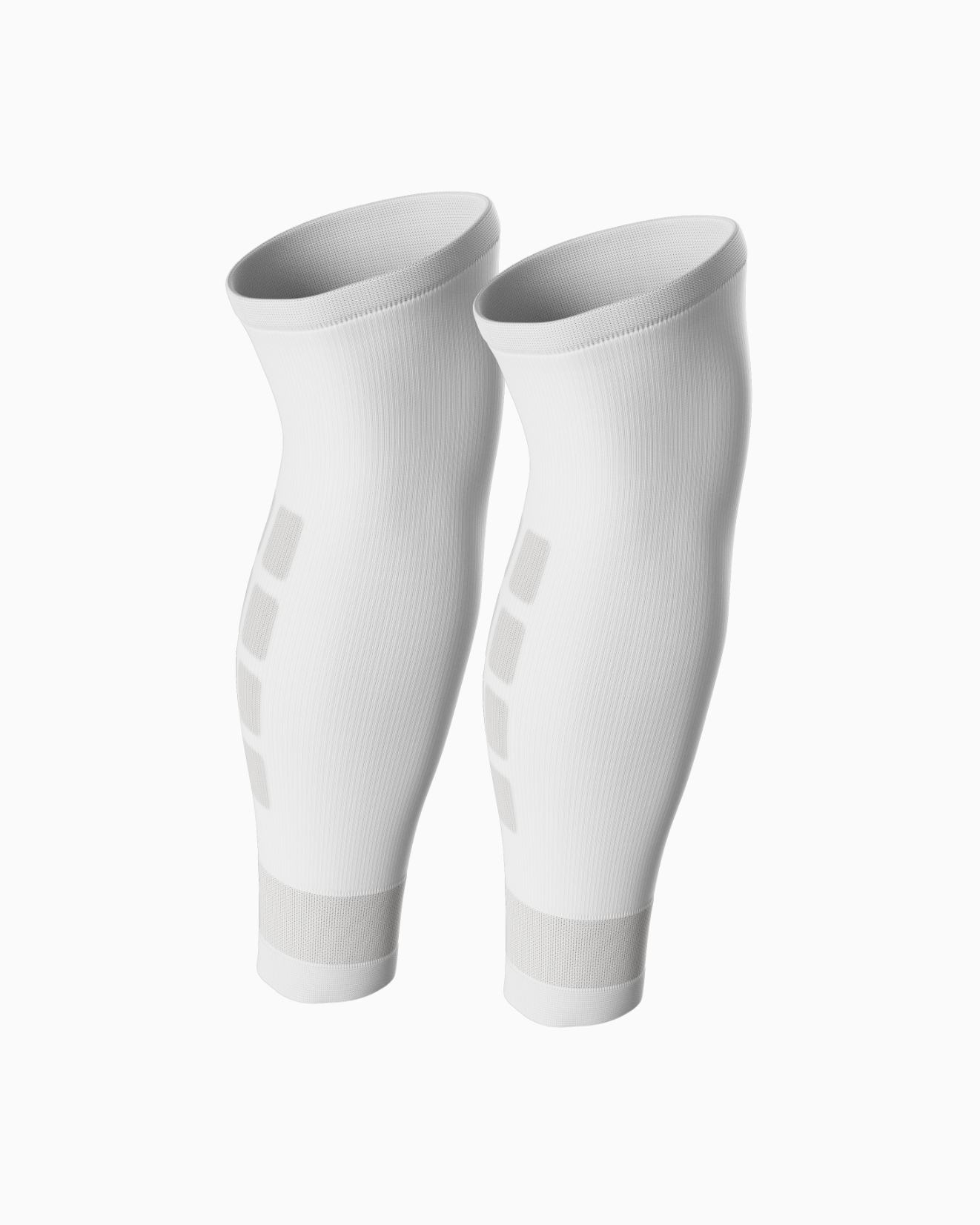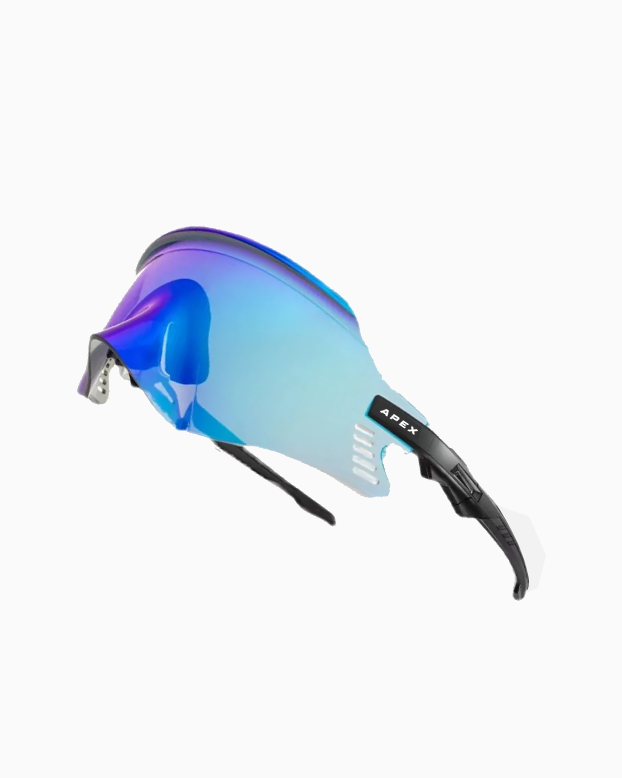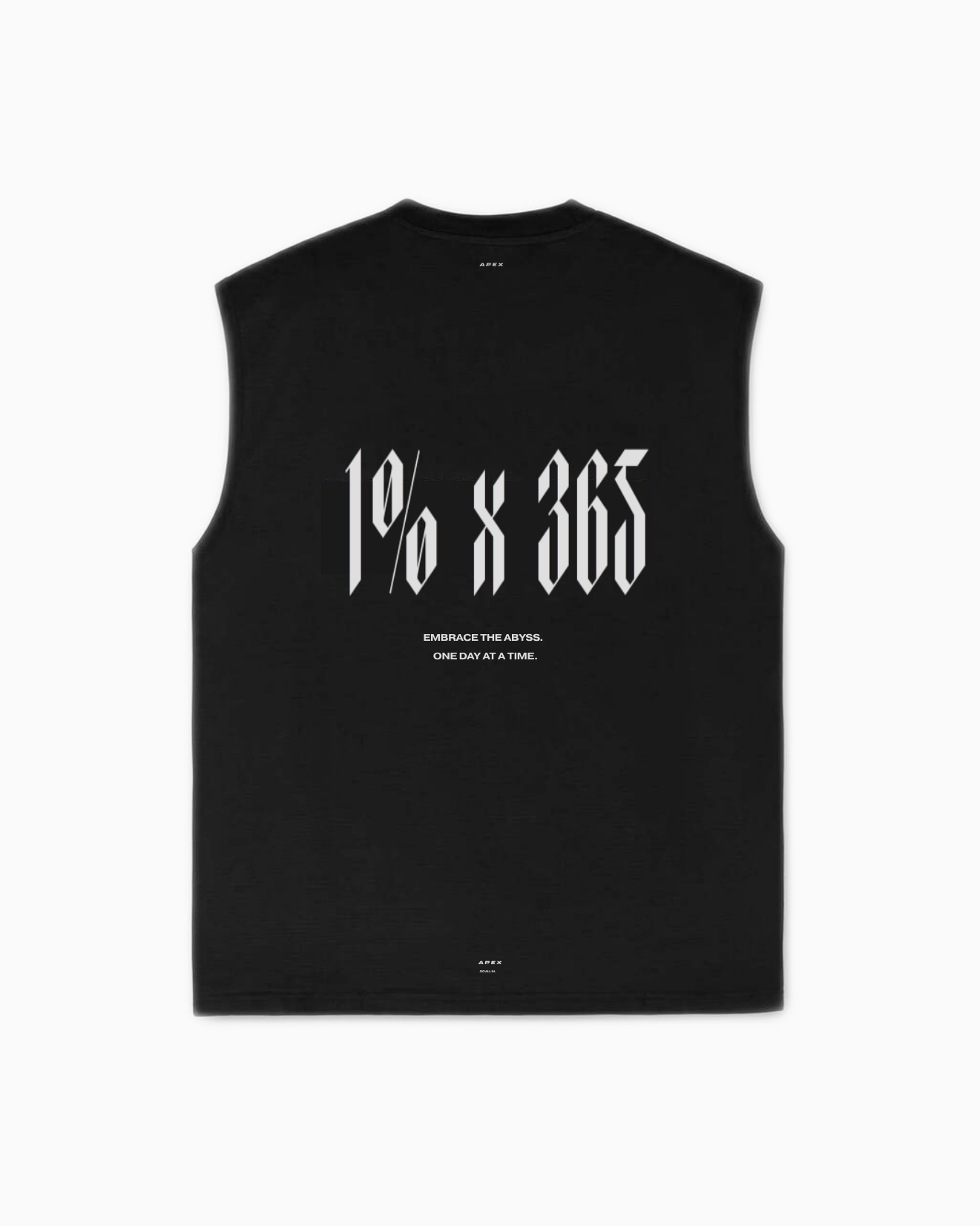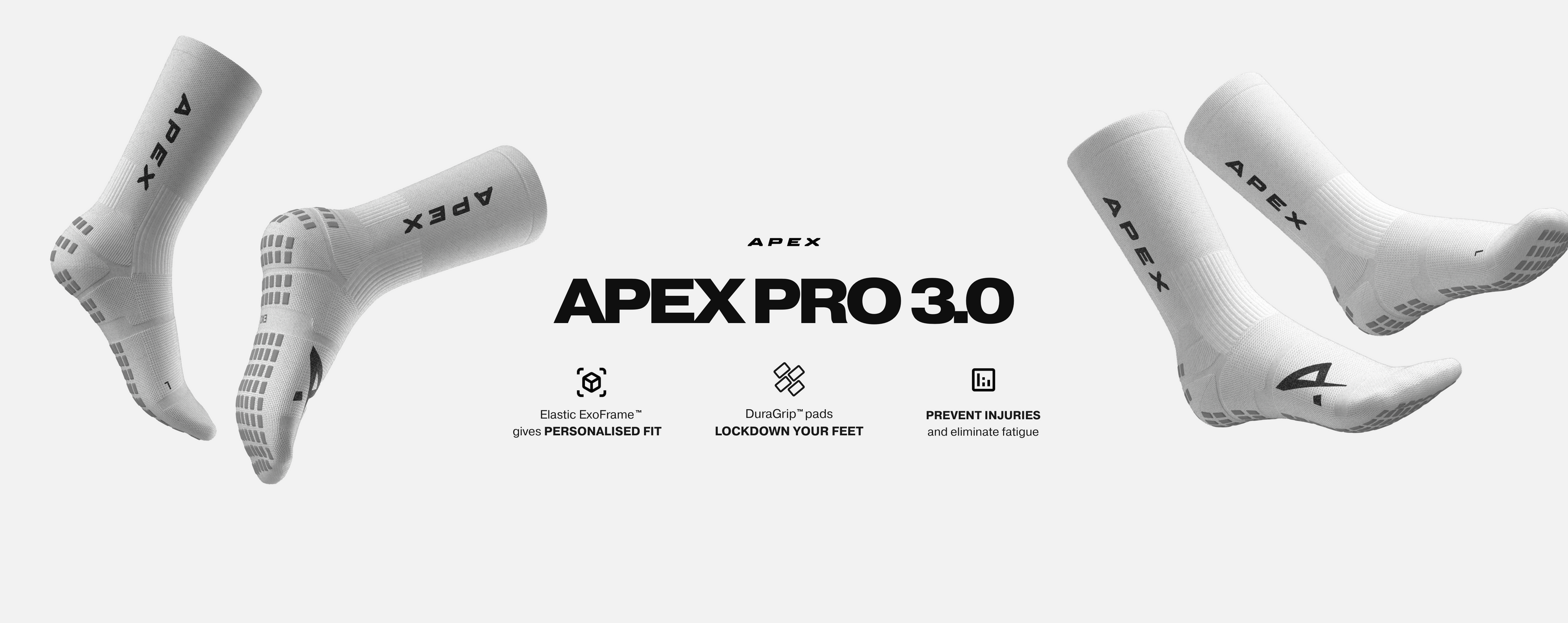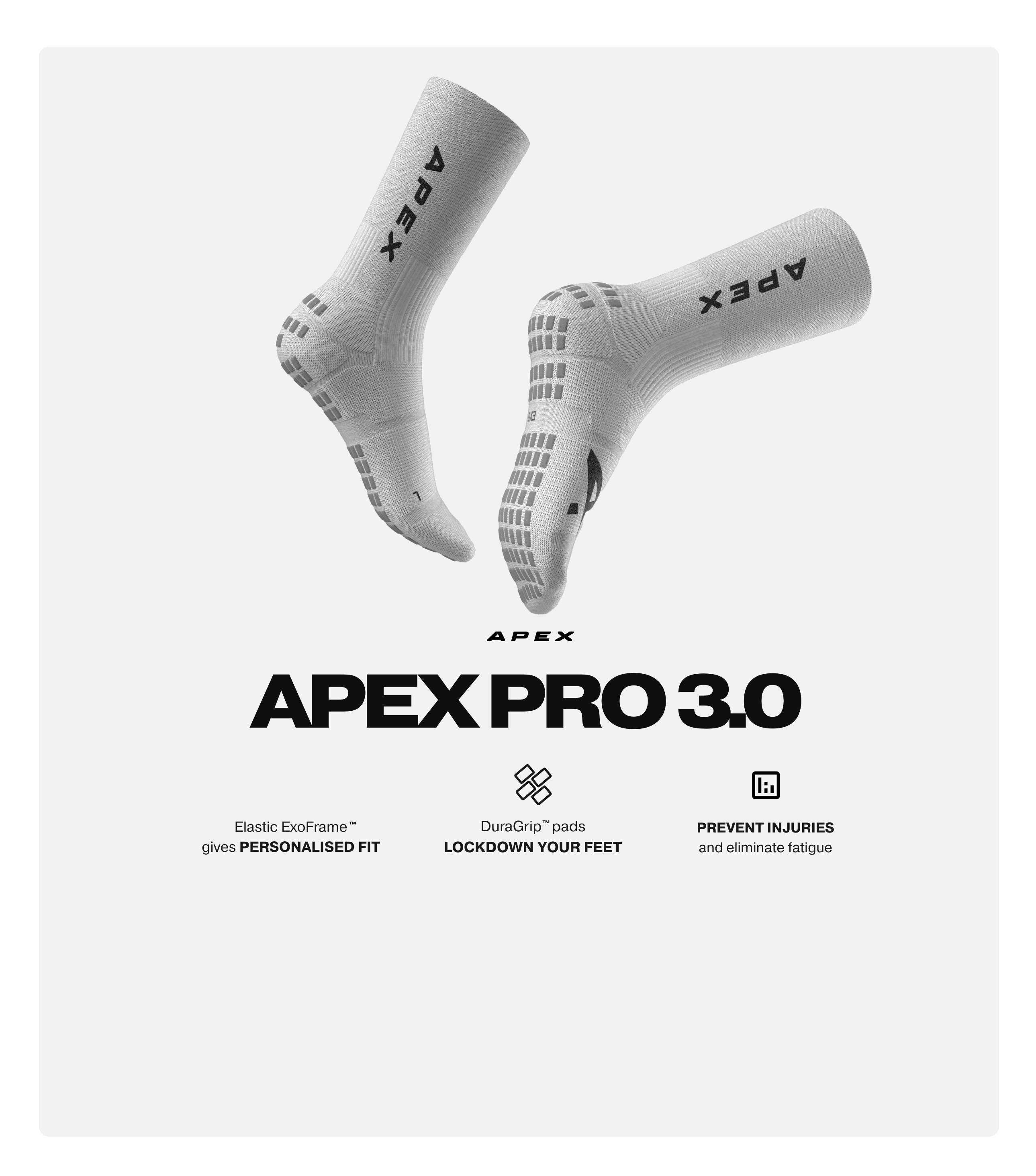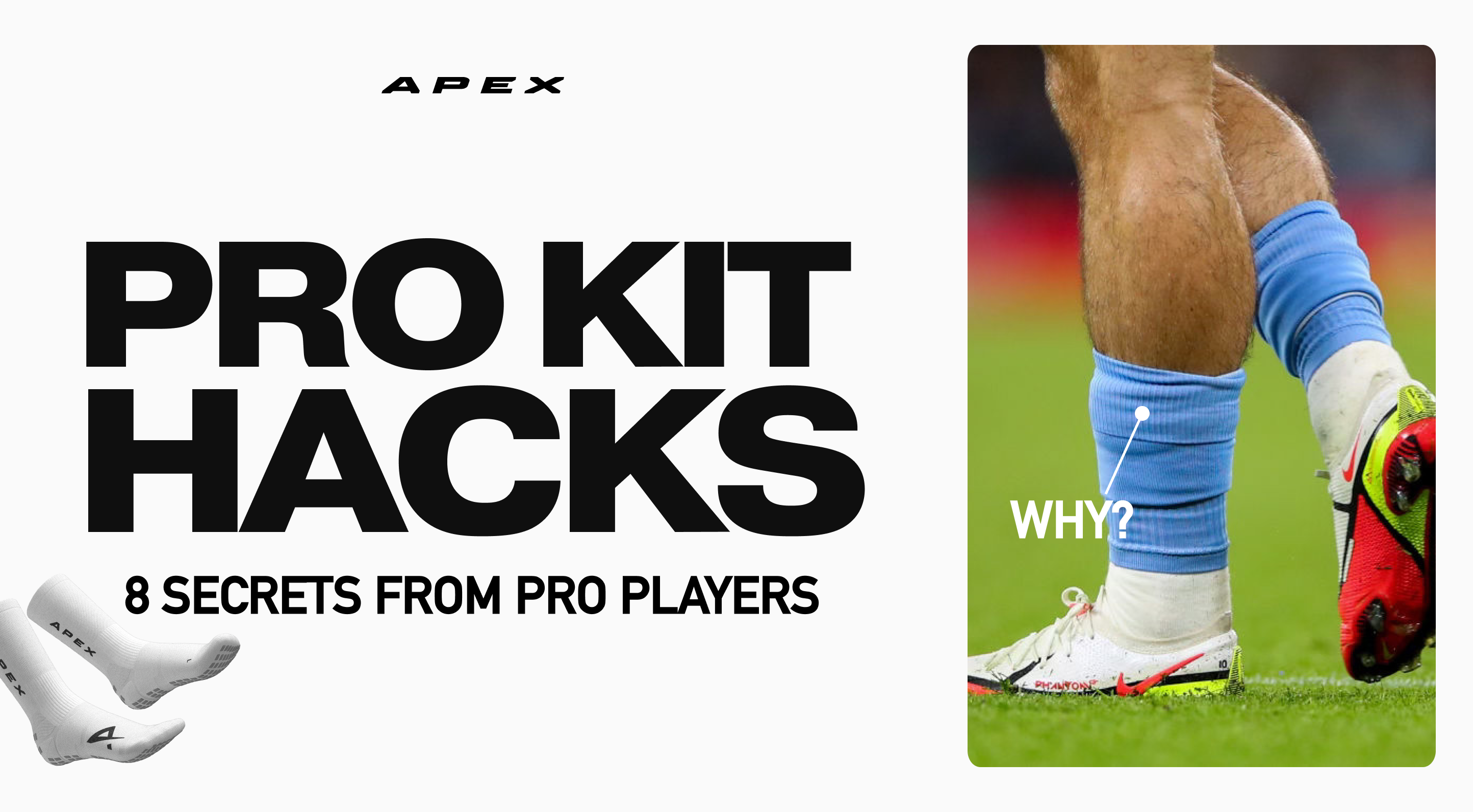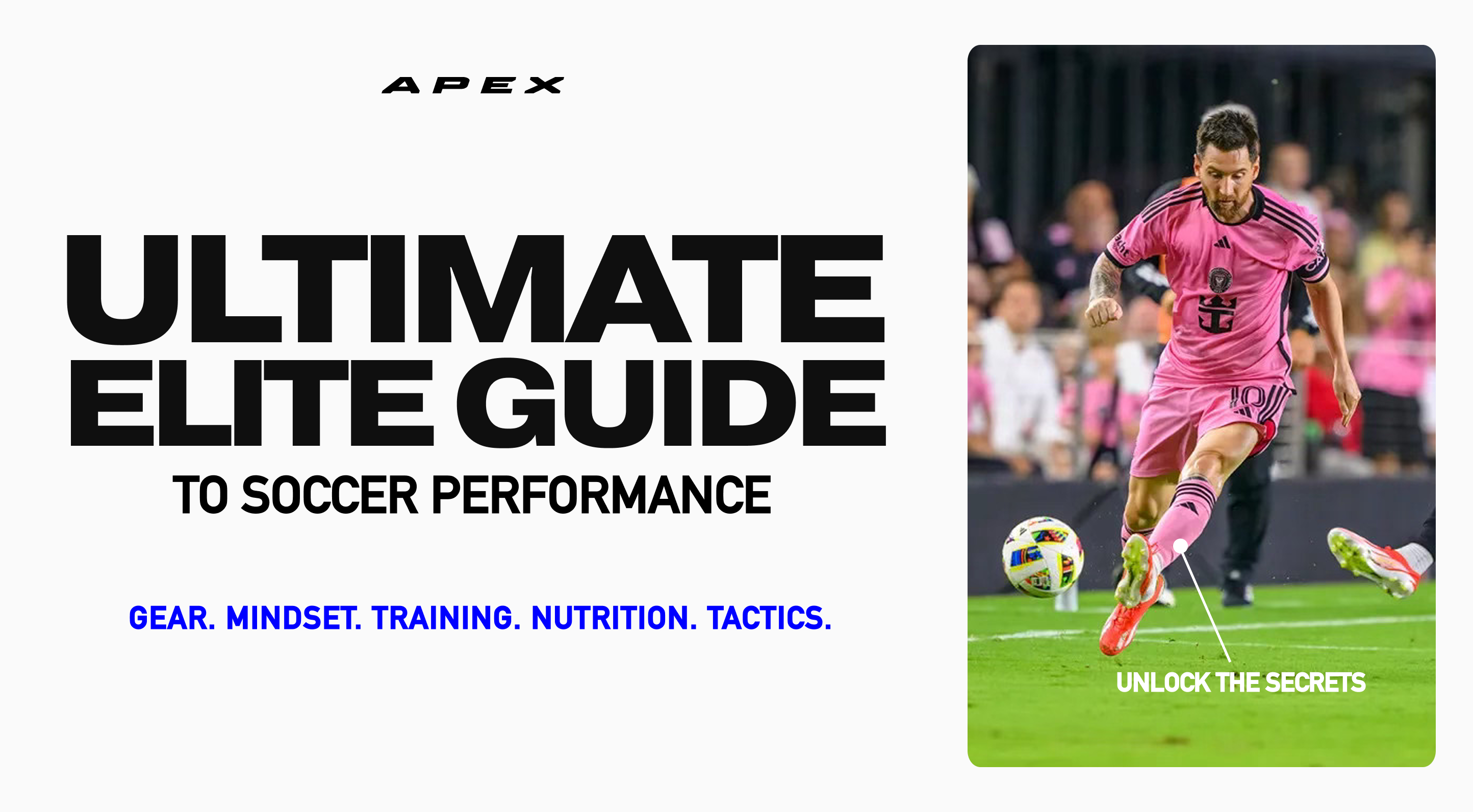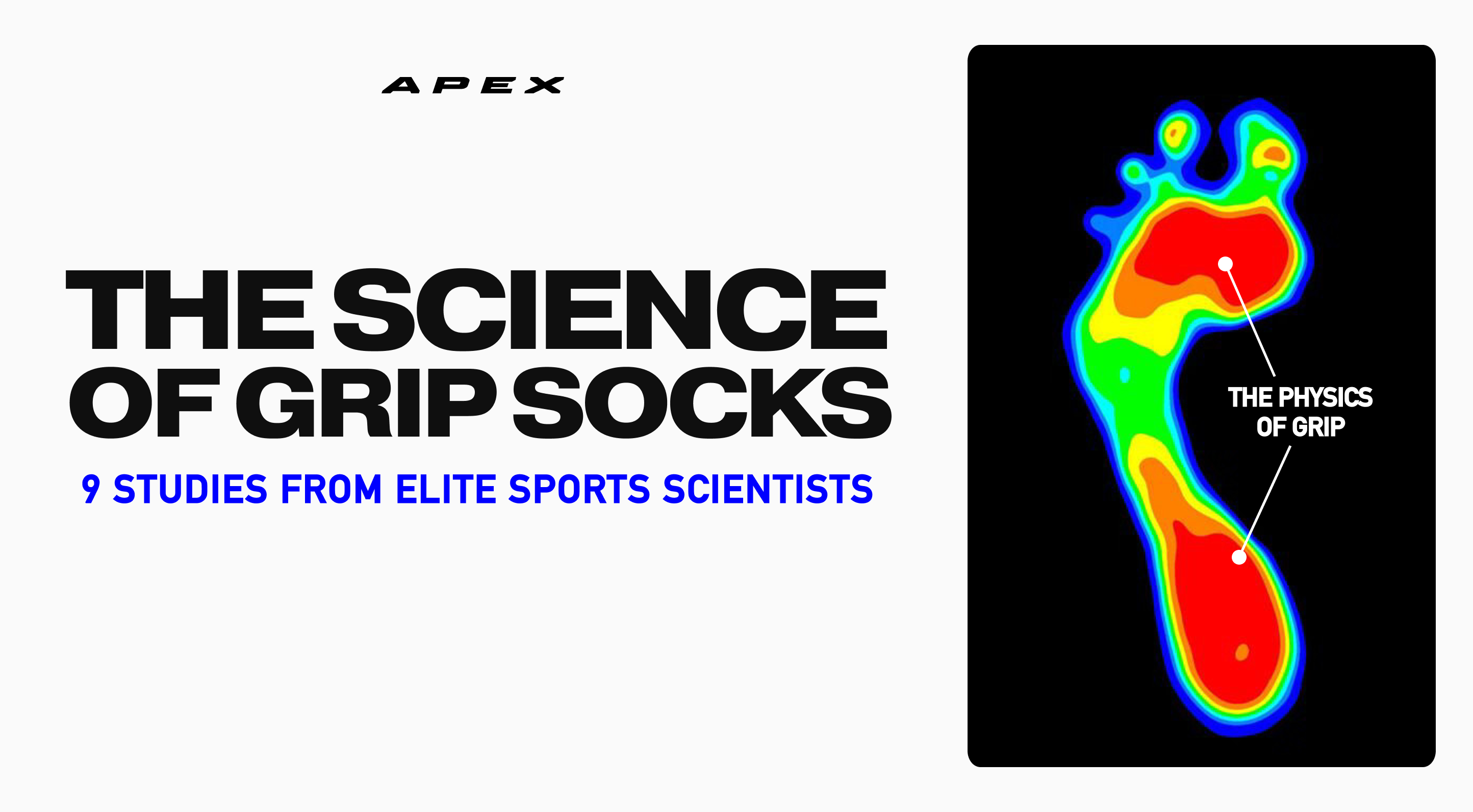The Foundations of Elite Football Performance
The gap between a good player - whether you’re in a college squad, academy system or semi-pro setup - and the elite tier of world football isn’t talent. It’s margins. A few percentage points in key areas that most players overlook.
The modern game is faster, more tactical, and more demanding than ever.
To rise to the top, it’s not good enough to have a strong right foot or a good engine. You need a system. A complete approach that builds every layer of performance.
At Apex, we break that system down into four key pillars:
-
Technical Skillset: This is your foundation. The ability to execute high-speed motor patterns with precision, under pressure, in real time. Passing, controlling, dribbling, and shooting all comes down to sharp technique repeated until it’s instinct.
-
Physical Output: The modern player needs speed, strength, and stamina. To compete, you need to cover more ground, recover faster, and execute at full speed for 90+ minutes. Without fading. Without dropping off.
-
Tactical Intelligence: Football IQ is non-negotiable. Where to be. When to press. How to expose space. How to adapt. Elite players don’t just play the game, they see it. They scan constantly, anticipate patterns, and make decisions before the ball even arrives.
-
Mental Structure: This is what separates the top 1% from the rest. Clarity. Composure. Focus. Confidence. Consistency. When everything is on the line - when the game gets messy, the crowd turns, the pressure’s on - the mentally strong players rise. The rest fade.
But here’s what most players don’t realise: each of these pillars has levels.
And at every stage of your career (from academy to first team, from semi-pro to pro) the demand increases. The margins get tighter. The games get faster. The decisions get harder.
The good news is you can out-work, out-think, out-learn, and out-practice everyone else on that pitch, in your league, and in your country by becoming a multi-dimensional player. One who’s dangerous in the 92nd minute, not just the 9th.
All you need is the tools, training, and gear to close the gap and become the player you know you’re capable of being. That’s what we’re here for.
Soccer Gear & Equipment
Let’s start with every player’s favourite performance booster: your gear.
Now, we’re not here to tell you that you need the most expensive boots. Or that your shin pads need to match the ones your favourite pro wore in the Champions League final. Because that’s not what makes the difference.
What matters is whether your gear actually serves your game.
The right gear gives you confidence in the small moments: planting your foot before a sprint, making a clean first touch, going into a 50/50 without hesitation. It frees up your focus and sharpens your instincts.
The wrong gear does the opposite. Slips. Distractions. Constant adjustments. That low-level discomfort that breaks your rhythm and chips away at your performance without even realising.
Because at the top level, every detail counts. And your gear is one of the easiest places to get those margins back.
BOOTS
What works for your favourite pro might feel like concrete on your feet. And no amount of marketing or player endorsements will change that.
What actually matters is fit, feel, and function.
Too many players chase hype and end up with blisters, poor traction, or boots that don’t suit their position or build.
So take the time to get it right. Pay attention to:
-
Upper Material: Knitted vs leather vs synthetic. Each offers different touch and responsiveness.
-
Stud Configuration: Make sure your boots match the surfaces you train and play on.
-
Heel and Toe Shape: Especially important if you’ve got wider or narrower feet than average.
-
Lockdown & Fit: Your boots should feel like an extension of your foot: snug, secure, but not restrictive. No slipping. No pressure points. No second-guessing your footing on a quick cut or sprint.
SOCKS
We’re a little biased here at Apex, but for good reason.
Out of all the gear you can invest in, upgrading your socks is one of the most overlooked, high-impact moves you can make.
Grip socks in particular have gone from a nice-to-have to a must-have for serious players. And once you’ve trained in a pair that actually works, there’s no going back.
Why? Because a good grip sock does more than stop blisters. It anchors your foot inside your boot. It eliminates internal slipping. It gives you more stability in tight turns, better energy transfer in sprints, and sharper reactions when the game moves fast.
That said, we’re not here to tell you there’s only one way to do it.
Some players prefer a one-piece sock. Others swear by pairing grip socks with a separate sleeve. What matters is finding what works for you.
Plus, not all grip socks are built the same. The placement of the pads. The material blend. The fit in your boot. It all adds up, so if you’re serious about your performance, it’s worth testing a few until you find your go-to pair.
SHIN PADS
They might not be the flashiest part of your kit, but they’re one of the most important. Especially if you don’t want your tibia separated from your leg by that 6’2” CDM who refuses to pull out of a 50/50.
Most players either go too small, too bulky, or too brittle.
Carbon-fibre shin pads might sound high-tech, but if it shatters on impact it’s doing more harm than good. On the other hand, oversized pads can restrict movement and slow you down.
What you need is balance:
-
Lightweight enough to stay quick
-
Durable enough to take hits
-
Shaped to your leg so they don’t slip mid-game
And yes, some pros wear pads the size of tic-tacs. But they’re also backed by world-class physios, refs, and insurance. You probably don’t. At least not yet.
So look for shin pads with solid shell construction, breathable backing, and a secure fit that doesn’t require constant readjustment.
TRAINING GEAR
When it comes to training gear, the goal is simple: wear stuff that lets you focus on the session.
That means:
-
Breathability: Look for moisture-wicking fabrics that keep you cool in the heat and dry when you’re pushing.
-
Durability: Cheap fabrics tear, stretch, and fade, especially when you’re training 4–5 times a week. Invest once and save yourself the hassle later.
-
Mobility: If your top rides up, your shorts bunch, or your joggers feel restrictive when you open up into a sprint, it’s going to mess with your movement.
It’s also worth thinking in layers. Lightweight base layers, thermals for colder days, and weatherproof outerwear that won’t weigh you down when the rain comes mid-session.
At the end of the day, your training gear won’t turn you into a pro. But the right setup will help you train like one, with fewer distractions, more comfort, and sharper intent in every rep.
Football Training & Drills
If you’re reading this, chances are you’re already part of an organised team. You’ve got scheduled sessions, team drills, maybe even some video analysis. That’s great. But it’s not enough.
Because the truth is, what separates the good from the elite happens outside of those sessions. In the quiet 6am solo drills. In the 30-minute touches before dinner. In the daily commitment to sharpening the parts of your game no coach can force you to own.
You don’t rise to the next level by waiting on someone else to structure your progress. You do it by taking control.
TECHNICAL SKILLS
Mastering the basics, and then executing them under pressure, is what makes you reliable, dangerous, and unplayable:
-
Ball Control: Wall rebounds (both feet), tight keepy-ups, first-touch kills, and volleys to develop your touch and responsiveness.
-
Passing: Rebound boards, wall passing at varied distances, driven skim passes, and long diagonals to refine technique and foot precision.
-
Dribbling: Cone mazes, tight-box sprint drills, the Ronaldinho square, and sprint-stop-repeat drills to mirror real-game pressure and ball mastery.
-
Shooting & Finishing: One-touch finishes, weak-foot repetition, first-time volleys, near/far post accuracy drills, and finishing on the run.
-
Crossing: Timed delivery drills, driven low crosses, chipped crosses under pressure, and repetition from both flanks to hit zones consistently.
-
First Touch Under Pressure: Receiving with passive or active pressure, turning tight in confined space, and taking the ball on the move with intent.
-
Receiving on the Half-Turn: Open-body shape drills, bounce-pass turns, pressure pop-outs, and quick scanning before the ball arrives.
POSITIONAL SKILLS
It’s one thing to be technically sharp. It’s another to know how and where to apply it. Because football isn’t played in drills. It’s played in context. That means refining the decisions, movements, and instincts specific to your role on the pitch.
-
Centre Midfielders: Work on awareness drills, shoulder checks before receiving, scanning with every touch. Practice press-resistant turns, quick outlet passes, and decision-making in tight spaces. Get used to playing on the half-turn under time pressure.
-
Wingers & Wide Forwards: Refine your 1v1 moves, acceleration into space, and delivery on the run. Practice cut-inside shooting, low and driven crosses, and overlapping coordination if you’re also covering fullback roles.
-
Strikers: Finishing in chaos. One-touch reactions. Timing your runs between defenders. Practice near-post and far-post movement, volley technique, and headers from crosses or set pieces. The key here is repetition under fatigue.
-
Centre-Backs: Positional shape drills. Long-range passing. Aerial dominance. Practice clearing with both feet, playing out from the back, and reading triggers to step or drop. Mix in defending isolated 1v1s to build sharpness.
-
Fullbacks: Overlap timing. Recovery sprints. Blocking crosses. Work on covering space behind the line, combining with wingers, and getting deliveries in from different angles.
-
Goalkeepers: Footwork drills, reflex saves, distribution under pressure. Work on positioning and communication even during solo sessions, especially for modern keepers expected to play as sweepers.
CONDITIONAL & FITNESS DRILLS
You don’t need a state-of-the-art facility to get fit for the modern game. You need consistency. Intensity. Intent. Here’s where to start:
-
Sprint Repeatability: 10x20m or 6x40m sprints with walk-back recoveries. Focus on max effort and clean mechanics, especially under fatigue.
-
Change of Direction: Cone drills, Y-shuttles, or zig-zag patterns with deceleration. Build explosive cuts and controlled stops that mirror real game movement.
-
Tempo Runs: 3-5 sets of 4-minute runs at 75–80% max effort with 1-minute jogs in between. Trains aerobic capacity and mental focus.
-
High-Intensity Intervals: Try 30 seconds sprint, 30 seconds walk x 10 rounds.
-
Core & Stability Work: Not just sit-ups. Think anti-rotation holds, Copenhagen planks, and single-leg balance under tension.
Soccer Tactics & Strategy
At the highest level, football is a game of patterns, positioning, and decision-making.
It’s not just about being faster or stronger. It’s about knowing where to be before the ball arrives. Reading the cues. Adapting in real time. Making the right choice under pressure.
And that only happens when you study the game.
At Apex, we’ve spent decades playing the game, but we’ve also spent decades studying it. Rewatching game film. Breaking down tactics. And, yes, even playing Football Manager.
Laugh if you want. But Football Manager’s match engine is built on years of real-world data and tactical modelling, so it’s a massively underrated way to understand soccer tactics and strategies without watching 10 real matches a week.
Here are some areas worth studying:
CORE FORMATIONS
You don’t need to master every shape, but you do need to know what each demands:
-
4-3-3: High pressing, wide overloads, positional rotation.
-
4-2-3-1: Balance between compactness and creative freedom.
-
4-4-2: Defensive solidity, classic counter-attacking structure.
-
3-5-2: Wingback-heavy width, two up top, layered midfield.
-
5-4-1: Low block, compact defending, break through pace.
PLAYER ROLES
Your position is your zone, but your role defines your job. Know the difference.
Study the nuances between:
-
Centre Backs: Stopper vs ball-player. Wide CB vs central anchor.
-
Fullbacks: Traditional vs inverted. Defensive vs overlapping threat.
-
Midfielders: Box-to-box, deep-lying playmaker, anchor, mezzala.
-
Forwards: Target man, false nine, advanced forward, inside forward, pressing forward.
GAME PATTERNS
Elite players notice different attacking and defensive patterns too:
-
Attacking: Third-man runs, overlapping overloads, central compactness with wide stretch, false nine drop-and-spin.
-
Defensive: Trigger presses, mid-block traps, funneling wide, shifting as a unit, denying passing lanes.
Mindset & Mental Preparation for Soccer Players
The GOATs aren’t just physically gifted. They’re mentally different.
Yes, every athlete is wired differently. Some are naturally confident. Others thrive in chaos. But mental strength, focus, and resilience aren’t fixed traits. They’re built.
At Apex, we break mental performance into three critical areas:
IN-GAME PERFORMANCE
This is where it matters most. On the pitch, you’re making thousands of split-second decisions: pressing or holding shape, taking a shot or slipping in a teammate, staying composed or reacting emotionally.
Elite players learn to enter what’s known as flow state where time slows down, instincts take over, and everything just clicks. Zidane once said it felt like he played in slow motion. That’s not magic. That’s awareness, control, and clarity under pressure.
To build it, you need to:
-
Handle nerves so they sharpen you instead of stalling you.
-
Bounce back fast from mistakes or missed chances.
-
Make better decisions under fatigue, pressure, or chaos.
-
Channel aggression into focus, not fouls or frustration.
-
Trust your instincts, because hesitation is the enemy of impact.
PRE-GAME ROUTINE & TRAINING
Confidence on the pitch starts long before kick-off.
From the week’s training to the final seconds in the changing room, it’s about creating a mental environment where you're calm, focused, and ready to perform.
That means developing a pre-game routine that primes your body and sharpens your mind:
-
Visualisation: Rehearse key moments like scoring and winning tackles.
-
Breathing & Regulation: Lower anxiety, control arousal, lock into your zone.
-
Mental Reps: Practice how you want to feel and react before it happens.
-
Confidence Peaking: Remind yourself of the work you’ve done. Play from certainty, not hope.
GOAL SETTING & MENTAL FRAMEWORKS
It’s easy to say “I want to go pro” or “win the league.” But goals without structure are just wishes. You need a system.
-
Macro → Micro: Set long-term targets (season or career), then break them into monthly, weekly, and daily actions.
-
Process over outcome: Focus on what you control - effort, attitude, recovery, learning - not just goals on a scoreboard.
-
Track & Reflect: Review your progress, adjust your approach, and stay aligned with what actually matters.
Fuel, Recovery & Longevity for Footballers
There's a reason some of our favourite players have graced the hallowed turf for over 20 years - they fuel and recover better than anyone on the planet. It's really a very simple combination that you can put in place today, it just costs the utmost discipline.
NUTRITION
What you put in your body directly impacts what you get out of it on the pitch.
-
Matchday Fuel: Eat for performance, not comfort. Think slow-digesting carbs, lean protein, and low-fibre meals 3–4 hours before kick-off. Top up with a banana or energy gel 30–60 mins out.
-
During the Game: Simple sugars and electrolytes if needed. Hydration is king.
-
Post-Match Recovery: Rebuild with carbs and protein within 30–60 minutes. Rehydrate. Replenish. Repair.
INJURY PREVENTION
Staying on the pitch is just as important as how you perform on it. That means bulletproofing your body before problems start.
-
Warm Ups & Cool Downs: These aren’t optional.
-
Protect the Key Zones: Ankles. Knees. Hamstrings. Use banded activation drills, eccentric loading, and stability work to build resilience where it counts.
-
Mobility & Movement: Add 10 minutes of mobility work into your daily routine. Hips, ankles, spine.
RECOVERY TOOLS & STRATEGIES
You only get one body. Treat it like a pro.
-
Sleep: Your #1 recovery tool. 8+ hours isn’t negotiable. No phone. No junk light. Full blackout if you can.
-
Cold & Heat: Ice baths post-match. Saunas or contrast therapy if available.
-
Massage & Compression: Foam rolling, massage guns, compression gear used consistently.
-
Rest Days: Strategic rest resets your nervous system and prevents burnout.
-
Invest in gear that supports you: well-fitted boots, grip socks, knee sleeves, whatever helps you train longer with less risk.
Additional Tools for Elite Soccer Players
Coming soon.

